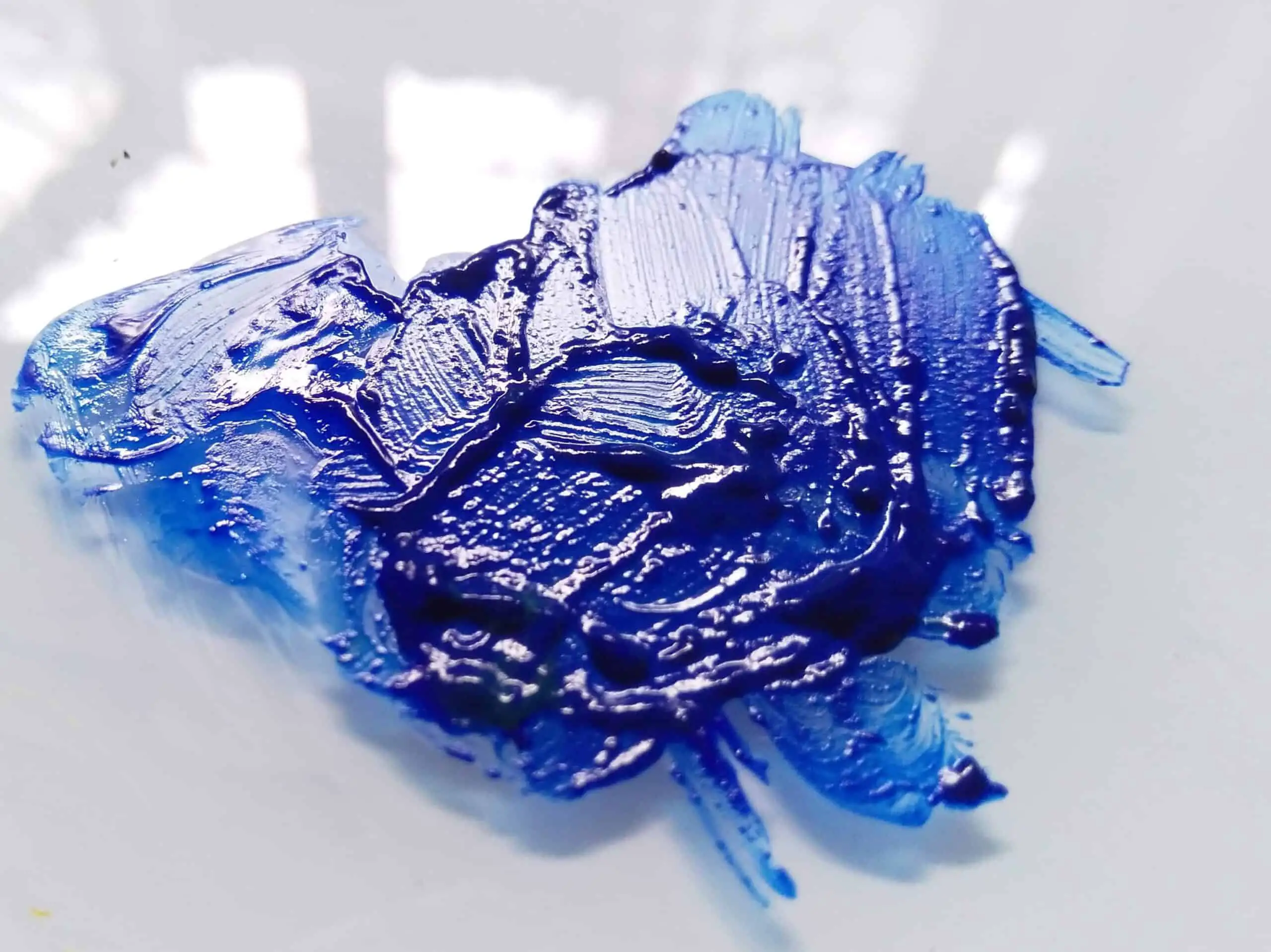Bad acrylic paints can be a real frustration for us artists considering how expensive a good acrylic paint tube can be. Therefore it is best to check if your acrylic paint has gone bad. Here is how to tell if acrylic paint is bad.
Bad acrylic paints have one or more following signs and symptoms; chunky, rubbery, or stringy consistency, separated, dried, moldy bad-smelling acrylic paints. If acrylic paint has completely dried, it cannot be recovered. In other cases, it can be fixed.
It is important to know what these signs and symptoms are telling you. That way you can prevent acrylic paint from going bad or fix them to save more acrylic paint.
How to know if acrylic paint has gone bad?
You can know if acrylic paint has gone bad by checking the consistency, texture, odor, and appearance of the paint. If you noticed anything unusual it may be a sign of bad acrylic paints. The reason for these changes is moisture, air exposure, and microbial growth.
In general acrylic paint is a combination of pigment, acrylic polymer binder, water (a vehicle that keeps acrylic paint liquid in the paint tube or container), and additive. Additives in acrylic paint may include anti-clumping agents (to prevent acrylic paint from clumping together), preservatives, anti-foaming agents, etc.
However, the composition can be changed from one manufacturer to other. We do not know the exact composition of any acrylic paint as this information is proprietary. Any changes to any component in acrylic paint can make the acrylic paint go bad.
I have written an article series about common acrylic paint questions and answers: part 1 and part 2. You can find answers to questions like this in the articles even before you face them.
In the below sections you can observe what bad acrylic paints looks like and what is it about them.
What does bad acrylic paint look like?
Bad acrylic paints can have chunks, rubbery or stringy consistency, a separated liquid binder, mold growth on paint, dried acrylic paint, and a bad smell. The reasons are either moisture evaporation, high moisture facilitating microbial growth, and paint sitting there for a long time.
Below I have discussed the common signs and symptoms of acrylic paint that has gone bad.
Chunky or dried acrylic paint
Chunky acrylic paints happen when moisture escapes from the acrylic paint due to high heat or air exposure. You can see this in very old acrylic paints. Normally acrylic paints should have a soft, smooth, and fairly thick consistency. Dried acrylic paints become hard and chunky. They cannot be reconstituted once completely dry.

Sometimes dry acrylic paint is better as a disposal method. If you are interested in using acrylic paint in an eco-friendly way, you can read my article; Alternative for Acrylic Paint: Best Eco-Friendly Solution.
Preventing forming of chunky hard acrylic paints…
Drying out happens when there is no airtight sealer for the paint container. You might have not closed the lids properly or there is paint in the cap of the paint tube and on the rim of the paint tube opening. It will prevent tightly closing the paint tube or jar to form an airtight sealer.
To properly close the paint tubes or jars and prevent drying out, always clean the opening of the paint tubes and jars along with their lids or caps. This will help the lids to form an airtight sealer.
I have written a whole article about why acrylic paint becomes thick and the best ways to fix it. You will learn about different consistencies of paint and adverse environmental factors that make acrylic paint thicker than usual.
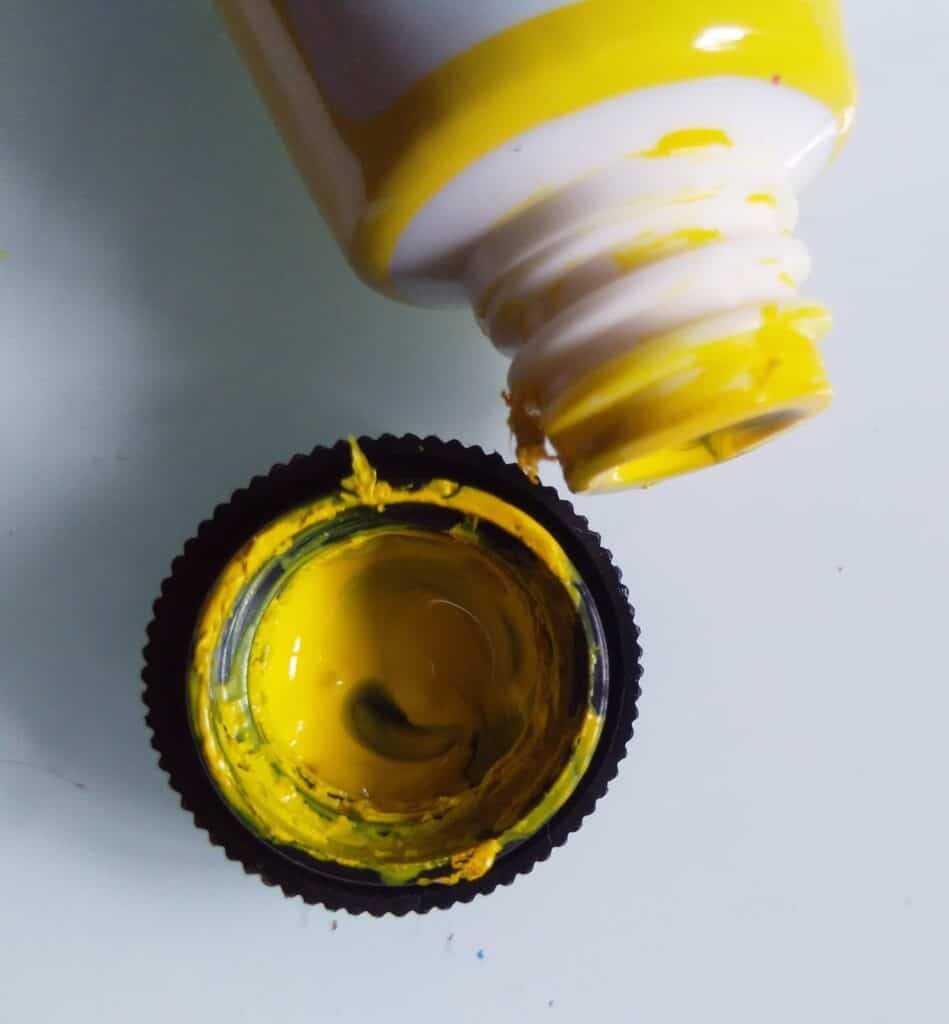
Storing acrylic paint at undesirable temperatures can also dry out the paint. Storing acrylic paints between 70 to 90oF( 21oC to 32oC) is ideal. However, never exceed these temperatures for a long time. It can cause defects in the paint. Freezing temperatures are also not good for acrylic paints.
I have written a whole article about why acrylic paint becomes lumpy or chunky and the best methods to prevent or fix it. You will find methods like straining the acrylic paint in detail there.
Fixing chunky hard paints…
Usually, there is no way to fix fully dried acrylic paint that has no trace of water or shine to it. But if there is any shine to the paint (meaning there is water) there is a small chance. You can add a little isopropyl alcohol with water and mix it with dried acrylic paint. It will eventually dissolve the acrylic paint. Now you can use this revived paint on the paintings.
Although alcohol breaks down the dried acrylic paint, it will not make the acrylic binder useful. So, you will not be able to uncover the full potential of acrylic paint with alcohol.
I have written a whole article about rehydrating or reactivating dried acrylic paint. You will know what to do and what not to do when reviving dried acrylic paints there.
If you are interested in knowing about acrylic paint drying, I have written a whole article about ‘why your acrylic paint not drying‘. You can find a wealth of information about factors that contribute to acrylic paint drying including the information obtained from renowned acrylic paint manufacturers.
Rubbery or stringy acrylic paint
Acrylic paints can thicken into rubbery or stringy consistency. This can be due to acrylic paints drying out by escaping the moisture or by bacteria and mold contamination that changes the consistency of the paint.
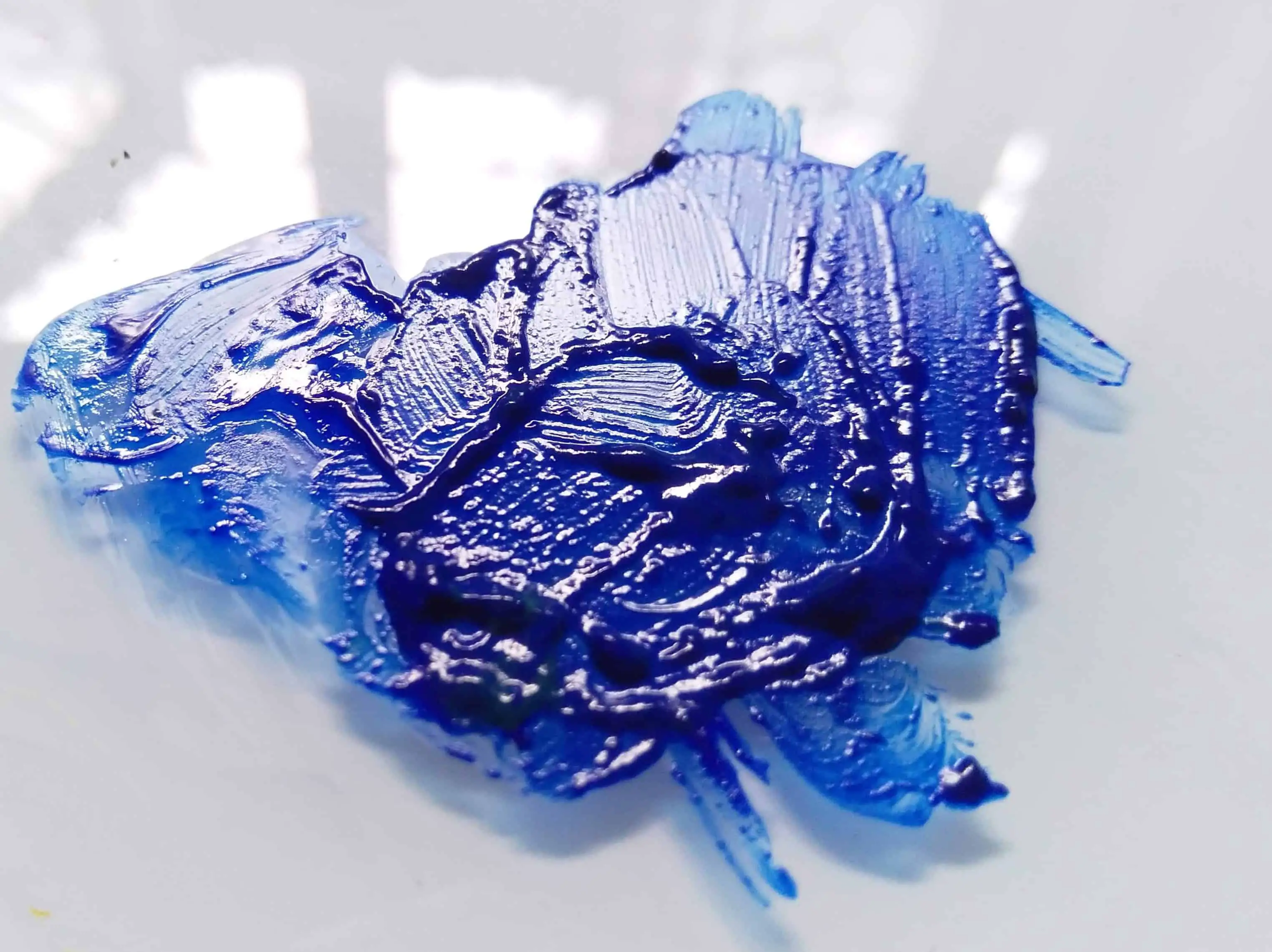
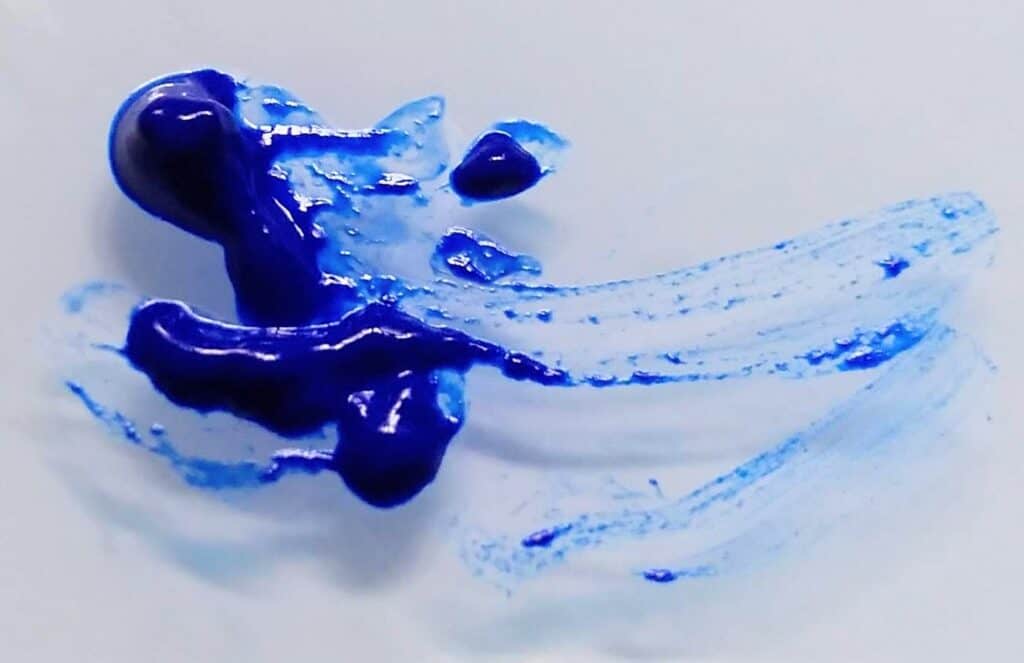
I asked Golden Paints about rubbery or stringy acrylic paints and if there is any way to fix them. Following was their response.
Usually, there isn’t a good way to fix rubber or stringy paint, but some artists have found some occasional use. Even though the consistency might have changed the paint usually can still dry and be a stable film. So it becomes a kind of accidental custom product. They could potentially still be used if the artist can accept the consistency and use it in their work to their advantage.
Scott Bennett, Materials Specialist for GoldenPaints.com
Painting with rubbery, stringy acrylic paint will be like painting with jello. If you are okay with that consistency there is no problem as it forms a stable acrylic paint film. You can also add some acrylic medium and mix well and obtain a consistency that might be more suitable for you.
I have written a whole article about the 17 pros and cons of acrylic paint. You can find all the important aspects of acrylic paint there.
Separated acrylic paint
Acrylic paints can be separated when the paint sits too long on the shelves of the art store, studio, or at home. Low temperatures below 50oF (10oC) can also contribute to separation.
Most paints, if left for a while will suffer from separation. This is where the binder becomes separated from the pigment. This can be easily remixed back into the color on a palette without any issues.
Debbie Bryan from Winsor & Newton
You can identify separated acrylic paints by observing for a clear liquid that sits on top of the paint. This is the acrylic binder that holds color pigments in a paint film together. As suggested by Winsor and Newton, this liquid can be mixed back into the paint film without any issue.
Mixing the separated acrylic polymer binder is easy if it happens in a jar or tub of paints. Mix the separated liquid in a jar with a clean and sterile palette knife. But it is harder to do in a paint tube. In this case, you can carefully knead the paint tube. But be careful not to put too much pressure as the tube can break if it is made from metal.
Some people suggest taking all the paint out of the paint tube and mixing the separated liquid back and then putting paint in the tube. I do not recommend this method as it has the risk of paint drying out and contamination once it is out of the tube.
I have written a whole article about why acrylic paints become watery and the best fixes for them. You can also find the results of DIY acrylic paint thickening methods there and what to expect from those methods.
Acrylic paint smells bad
Acrylic paint can smell bad when there is bacteria or mold growth in the paint. This is usually due to bacteria growth bi-products. These microbes can be introduced into the paints via brushes, unclean palette knives, or keeping acrylic paint after mixing it with water. It may also come through tap water.
If you cannot see severe mold growth in the paints that seems impossible to remove, you can still use the bad-smelling acrylic paint. The smell will be gone after applying acrylic paint to a surface like a canvas. As the paint film dries there will be no moisture left making it impossible for mold or bacteria to grow.
However, the most common form of microbial growth is bacteria. Other smells could simply be the natural smell of the product. Ammonia is the most common odor.
Moldy acrylic paint
Molds need a wet surface to grow on. If you left paint moist for a long time such as leaving paint on the stay wet palette or leaving paint after mixing with water for a long time, the paint can get moldy. Molds can develop even though there is a preservative added to paint.
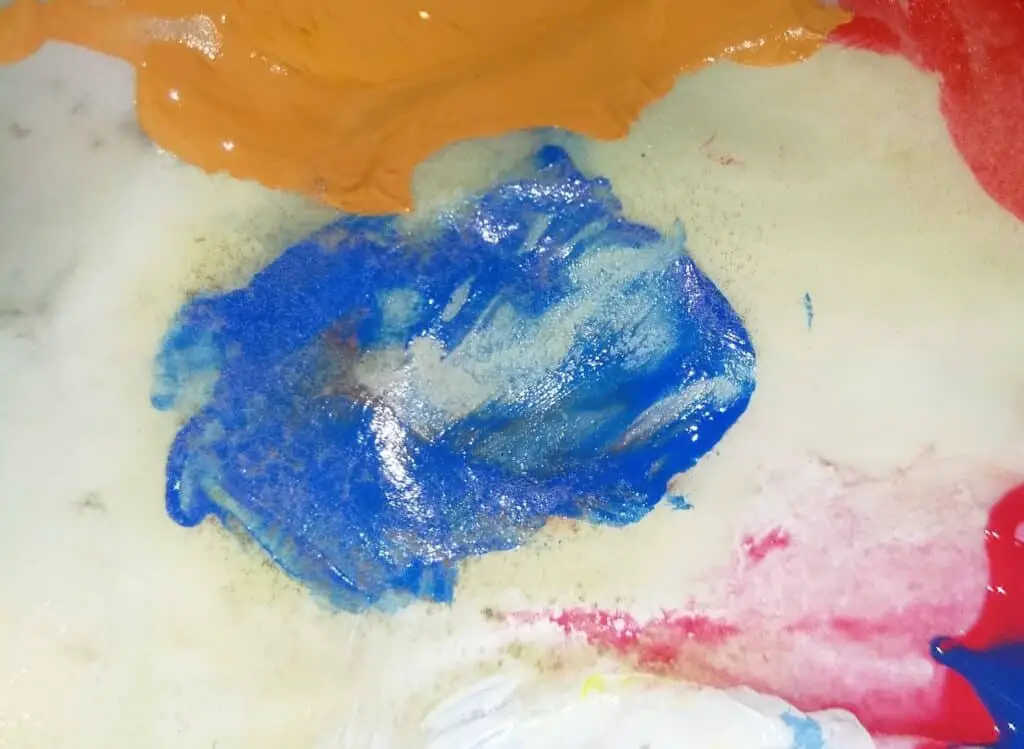
I asked Winsor and Newton about moldy acrylic paint and if there is any way to fix that.
Mold generally only grows on water mixable paints. We add an antimicrobial component to our colors to prevent this. So mold forms because of exterior contaminants. But you can remove mold and use paint. Once dry, mold should not be prevalent–unless stored in damp conditions.
Debbie Bryan from Winsor & Newton
As said in the previous section mold develop when you use the brush or palette knife to scoop out the paint from the paint tube, jar, or tub. This transfers microbes including molds to the paint.
You can prevent mold growth by using a separate clean and sterile palette knife to scoop out the paint or by directly adding the paint from the paint tube to the palette. It prevents contamination. You can also use an antimicrobial agent on the stay-wet palette such as Dettol to prevent mold growth.
If you already see mold growth on the paint you can remove the mold and use the paint. This is because mold will not grow once the paint is dry after applying on to a surface like a canvas. If the mold growth is severe it is best to throw out that acrylic paint.
You can find more information about factors that cause acrylic paint to go bad or expire in my article ‘How long does acrylic paint last‘.
Is it OK to use expired or bad acrylic paint?
It is okay to use expired or bad acrylic paint if it forms a stable paint film usually when the paint is not fully dried. You can fix bad-smelling moldy, separated, stringy, or rubbery consistency acrylic paints easily. However, one may not accept these conditions and may replace bad acrylic paints.
I have explained in the above sections how to fix bad or expired acrylic paints in detail. Once you have fixed the issue it is important that you take all the precautions to prevent it from happening in the future. How to keep acrylic paint from going bad will be explained in the below section.
I have written a whole article on ‘Can You Use Expired Acrylic Paint? (Pros and Cons Included)‘. Using the information in the article you can make an informed decision on whether to use expired acrylic paint or not.
How long does it take for acrylic paint to go bad?
In general most high-quality acrylic paint brands take 6 or more years unopened to go bad. Other acrylic paints go bad generally in 2 years. Once the paint tube is opened it will go bad quickly if proper storage conditions, exposure to air, and contamination are not controlled.
I have written a whole article about ‘How long does acrylic paint last‘. There you can find how long many different popular acrylic paint brands last.
Acrylic paint’s longevity is determined by the preservative used in acrylic paint. It is needed as water-based paint is a good place for microbes to live and grow. Therefore water-based acrylic paints use biocides as preservatives. In some cases, it caused skin irritation in those who are sensitive.
How to prevent acrylic paints from going bad
You can prevent acrylic paint from going bad if stored at the right temperature, and humidity, minimizing direct air exposure and reducing chances for contamination.
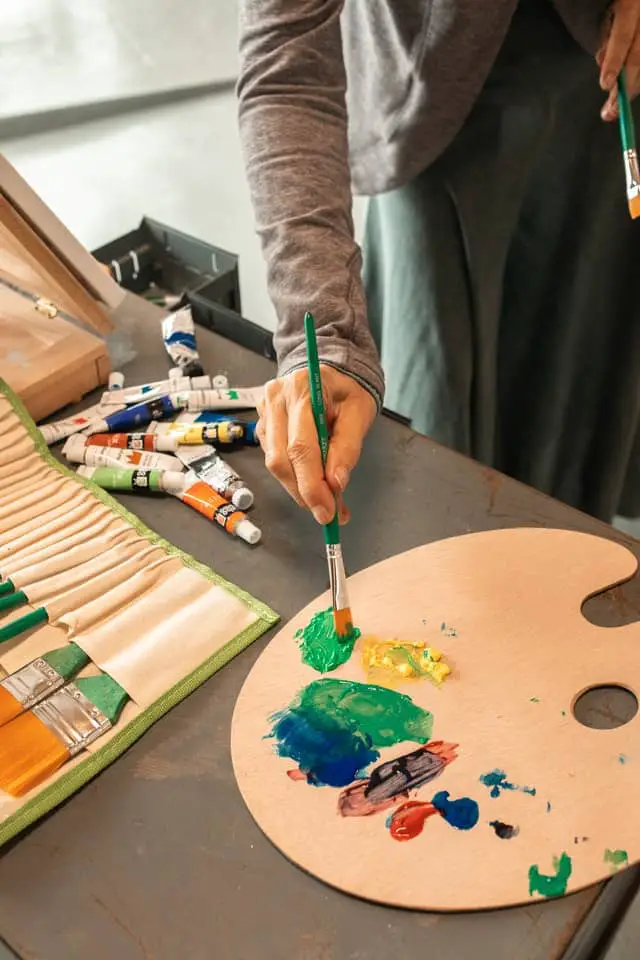
Below I have included a list of best practices for acrylic artists to keep the acrylic paints good for the longest.
- Store and use acrylic paints at temperatures between 70 to 90oF( 21oC to 32oC).
- Never store or use acrylic paints below 50oF (10oC). Order your acrylic paints before the winter.
- Store and use paint in relative humidity less than or equal to 75%.
- Use a separate clean and sterile palette knife to take out paint from the container or directly add paint from the paint tube to the palette.
- Do not keep acrylic paint too long after mixing with water or on a stay-wet palette.
- Clean the paint container lids and around the opening of the container after use.
Follow the above best practices every time you paint. This way you can save more paint that you spend a lot buying.
Conclusion
You can know if acrylic paint has gone bad by checking its appearance, odor, and consistency of paint. If you see any changes this might indicate acrylic paint has gone bad. Often times these defects in paints can be fixed if the paint is not fully dried. Always take precautions to prevent acrylic paint from going bad and ensure its’s longevity.
FAQ
Acrylic paint is too thick on canvas
Acrylic paint is too thick on the canvas happen due to moisture escaping from the paint or not using the paint properly. Try mixing acrylic medium or a little water to thin the paint and apply it on canvas. Usually high-quality artist-grade acrylic has a thick and rich consistency.

